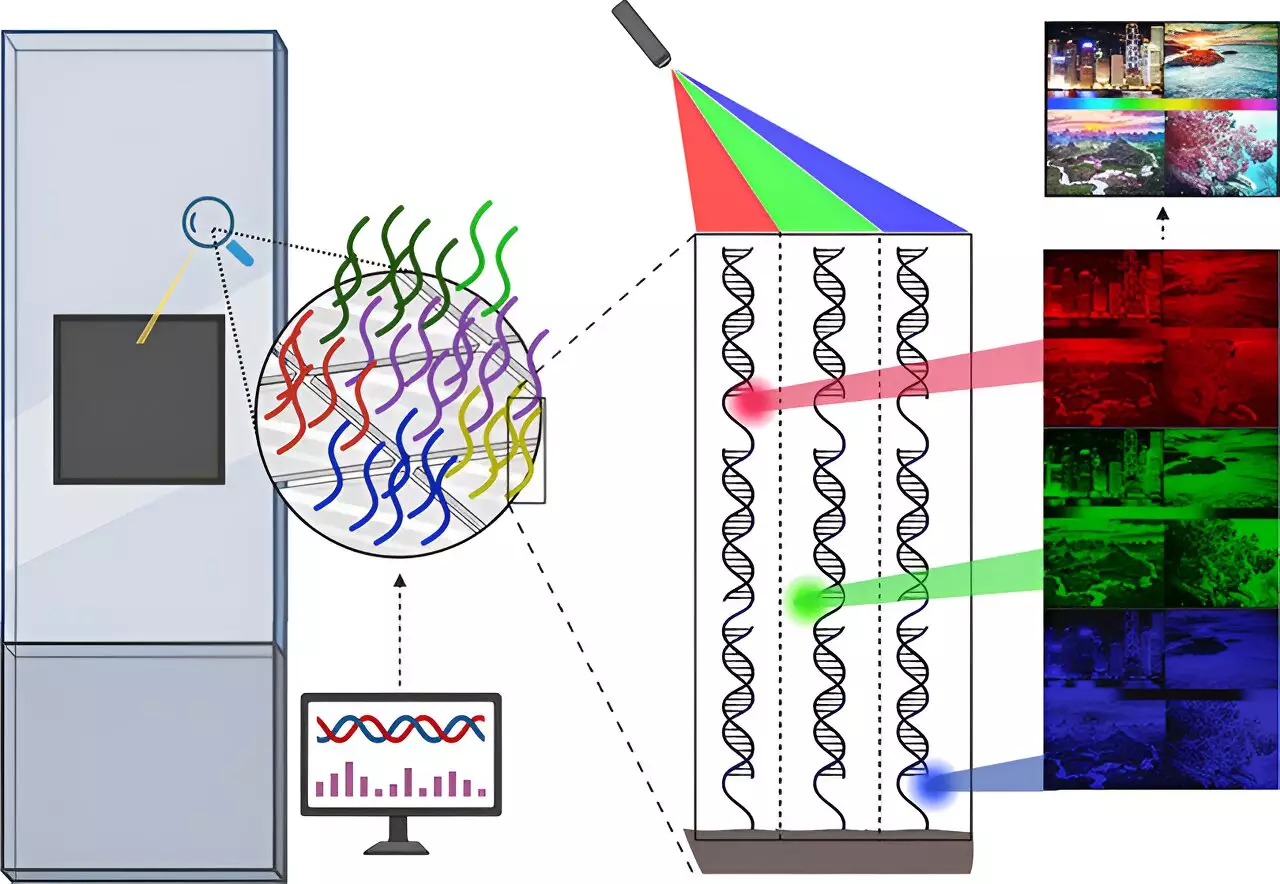The DNA double helix, with its intricate structure and complementary sequences, has long fascinated scientists. Researchers at the University of Vienna have now taken this fascination to a whole new level, by creating fluorescent duplexes that can generate an astounding 16 million colors. This breakthrough not only surpasses the previous limitation of 256 colors, but also opens up a world of possibilities in the fields of DNA manipulation, gene assembly, and even data storage.
The Power of DNA Duplexes
The ability of complementary DNA sequences to recognize and assemble as duplexes is what allows genes to be read and copied within the body. This process, known as duplex formation or hybridization, is both predictable and programmable. It forms the basis of synthetic gene assembly and the construction of large-scale nanostructures. However, until now, this process relied on perfect sequence complementarity. The researchers at the University of Vienna, however, have shown that controlled hybridization can result in the creation of an extensive color palette that accurately reproduces any digital image in DNA format.
Painting with DNA
To create colors, small DNA strands linked to fluorescent molecules are hybridized to a long complementary DNA strand. These molecules are capable of emitting red, green, or blue light, allowing for the creation of a wide range of colors. By carefully controlling the stability of the duplex, it is possible to vary the intensity of each color. The stability is adjusted by selectively removing bases of the DNA strand at pre-defined positions along the sequence. This process allows for the creation of 256 shades for each color channel, resulting in a total of 16 million color combinations.
To achieve such precision in DNA-to-color conversion, the researchers synthesized over 45,000 unique DNA sequences. They used a method called maskless array synthesis (MAS), which allowed them to parallelize the synthesis process. MAS enables the simultaneous synthesis of hundreds of thousands of unique DNA sequences on the same surface. By controlling the location of each DNA sequence, the corresponding color can be selectively assigned to a chosen area. The use of dedicated computer scripts automated the process, allowing for the transformation of any digital image into a DNA photocopy with accurate color rendition.
While the current resolution is limited to XGA, the researchers believe that the reproduction process can be applied to higher resolutions such as 1080p or even 4K. This opens up exciting possibilities for using DNA as a storage medium for digital data. Additionally, the revolutionary DNA color code developed by the researchers has the potential for numerous applications in various fields. From data storage to biomedical research, the potential of this breakthrough is vast and promising.
The chemistry of color has always held a special place in scientific advancements. From the development of quantum dots to the creation of 16 million colors using DNA duplexes, it is evident that the future of color chemistry is bright. The researchers at the University of Vienna have unlocked a new realm of possibilities with their breakthrough. As technology continues to advance, we can only imagine the potential applications and discoveries that lie ahead in the remarkable world of DNA.



Leave a Reply